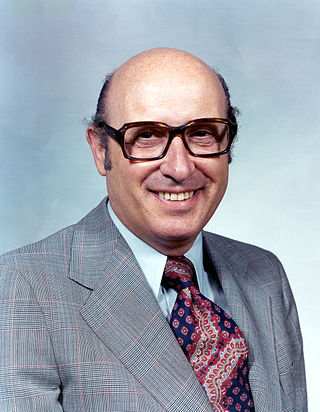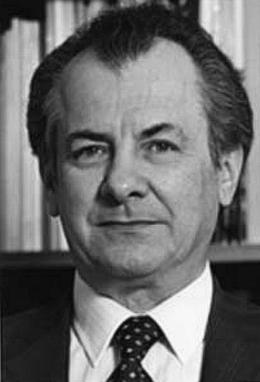Related Research Articles

James Franck was a German physicist who won the 1925 Nobel Prize for Physics with Gustav Hertz "for their discovery of the laws governing the impact of an electron upon an atom". He completed his doctorate in 1906 and his habilitation in 1911 at the Frederick William University in Berlin, where he lectured and taught until 1918, having reached the position of professor extraordinarius. He served as a volunteer in the German Army during World War I. He was seriously injured in 1917 in a gas attack and was awarded the Iron Cross 1st Class.

Lyman Spitzer Jr. was an American theoretical physicist, astronomer and mountaineer. As a scientist, he carried out research into star formation, plasma physics, and in 1946, conceived the idea of telescopes operating in outer space. Spitzer invented the stellarator plasma device and is the namesake of NASA's Spitzer Space Telescope. As a mountaineer, he made the first ascent of Mount Thor, with Donald C. Morton.

Robert Alan Frosch FREng was an American scientist who was the fifth administrator of NASA. He was the administrator from 1977 to 1981 during the Carter administration.

William Alfred Fowler (9 August 1911 – 14 March 1995) was an American nuclear physicist, later astrophysicist, who, with Subrahmanyan Chandrasekhar, was awarded the 1983 Nobel Prize in Physics. He is known for his theoretical and experimental research into nuclear reactions within stars and the energy elements produced in the process and was one of the authors of the influential B2FH paper.

Piet van de Kamp, known as Peter van de Kamp in the United States, was a Dutch astronomer who lived in the United States most of his life. He was professor of astronomy at Swarthmore College and director of the college's Sproul Observatory from 1937 until 1972. He specialized in astrometry, studying parallax and proper motions of stars. He came to public attention in the 1960s when he announced that Barnard's star had a planetary system based on observed "wobbles" in its motion, but this is now known to be false. On November 14, 2018, the Red Dots project announced that Barnard's star hosts an exoplanet at least 3.2 times as massive as Earth, though this does not match either of the planets he had claimed. In 2021, even this planet's existence was questioned.
The Center for Planetary Research at the University of Copenhagen was created in February 2001 when the planetary science groups from the Niels Bohr Institute and the Danish Space Research Institute (DSRI) [Danish: Dansk Rumforskningsinstitut, short DRI or DRKI] were merged. It no longer existed in August 2011. Together with associated national and international groups it aimed to strengthen planetary research in Denmark and to provide a platform for the education of planetary researchers. It spanned a broad range of disciplines from astronomy, physics, geophysics, and space instrumentation to geology and biology.

Gérard Henri de Vaucouleurs was a French astronomer best known for his studies of galaxies.

Harold (Hal) Masursky was an American astrogeologist.

Frank Kelley Edmondson was an American astronomer.

Charles Raymond Bentley was an American glaciologist and geophysicist, born in Rochester, New York. He was a professor emeritus at the University of Wisconsin–Madison. Mount Bentley and the Bentley Subglacial Trench in Antarctica are named after him. In 1957, he and a handful of other scientists including Mario Giovinetto set out on an expedition across West Antarctica in tracked vehicles to make the first measurements of the ice sheet.
The Harold Masursky Award for Meritorious Service to Planetary Science, usually called the Masursky Award, is awarded annually by the Division for Planetary Sciences (DPS) of the American Astronomical Society. The award for Meritorious Service to Planetary Science was established by the DPS to recognize and honor individuals who have rendered outstanding service to planetary science and exploration through engineering, managerial, programmatic, or public service activities. For purposes of this award, planetary science and exploration refers to the multidisciplinary study of the solar system and its members, excluding work dealing primarily with the Sun or the Earth. It was named in honor of Harold Masursky. The award has been given annually since 1991, except 2001, 2002, and 2009.

Richard Lawrence Garwin is an American physicist, best known as the author of the first hydrogen bomb design.
Charles Stuart Bowyer was an American astronomer and academic. He was a professor at the University of California.
George B. Field is an American astrophysicist.
Theodore Dunham Jr. was an American astronomer and physicist.

Robert Willard Farquhar was an American mission design specialist who worked for NASA. He designed halo orbits and was involved in a number of spaceflight missions.

Anne L. Kinney is an American space scientist and educator. Kinney is currently the Deputy Center Director at NASA Goddard Space Flight Center. Previously, she held positions as the head of the Directorate for Mathematical and Physical Sciences (MPS) for the National Science Foundation (NSF), the Chief Scientist of the W.M. Keck Observatory, Director of the Solar System Exploration Division at NASA Goddard Space Flight Center, Director of the Origins Program at NASA Jet Propulsion Laboratory, and Director of the Universe Division at NASA Headquarters. She earned a bachelor's degree in astronomy and physics from the University of Wisconsin-Madison and a doctorate in astrophysics from New York University, and has published more than 80 papers on extragalactic astronomy. She was an instrument scientist for the Faint Object Spectrograph that flew on the Hubble Space Telescope.

Lynnae C. Quick, Ph.D. is an American planetary geophysicist and Ocean Worlds Planetary Scientist at NASA Goddard Space Flight Center. Her research centers on theoretical modeling of cryovolcanic processes on the icy moons and dwarf planets in the Solar System as well as modeling volcanic activity on Venus and the Moon. Quick is a member of the Dawn, Europa Clipper, and Dragonfly Mission science teams. She is also a member of the NASA Solar System Exploration Research Virtual Institute (SSERVI) Toolbox for Research and Exploration (TREX) team, and serves as co-chair of the Earth and Planetary Systems Sciences section of the National Society of Black Physicists.
William Frank Brinkman is an American physicist who served as president of the American Physical Society (2002) and was the head of the Office of Science at the United States Department of Energy (2009–2013). He was elected to the National Academy of Sciences in 1984, and won the George E. Pake Prize in 1994. He was elected as a member of the American Academy of Arts and Sciences in 1992, and became a member of the American Philosophical Society in 2002.
Herbert Friedman was an American physicist and astronomer who did research in X-ray astronomy. During his career Friedman published hundreds of scientific papers. One such example is "Ultraviolet and X Rays from the Sun". He was elected to the American Academy of Arts and Sciences and the United States National Academy of Sciences in 1960. He received the Eddington Medal of the Royal Astronomical Society in 1964. That same year, he was elected to the American Philosophical Society.
References
- ↑ "Brunk, William Edward, 1928-". snac. Retrieved 21 December 2014.
- ↑ "(2499) Brunk". Dictionary of Minor Planet Names . Springer. 2007. p. 204. doi:10.1007/978-3-540-29925-7_2500. ISBN 978-3-540-00238-3.
- ↑ "Harold Masursky Award for Meritorious Service to Planetary Science". American Astronomical Society . Retrieved 21 December 2014.